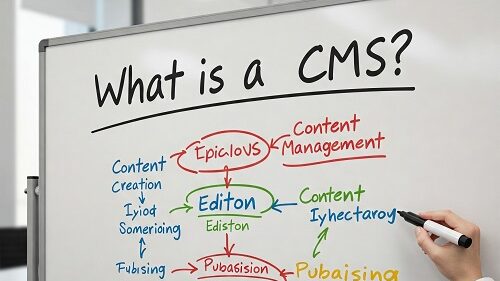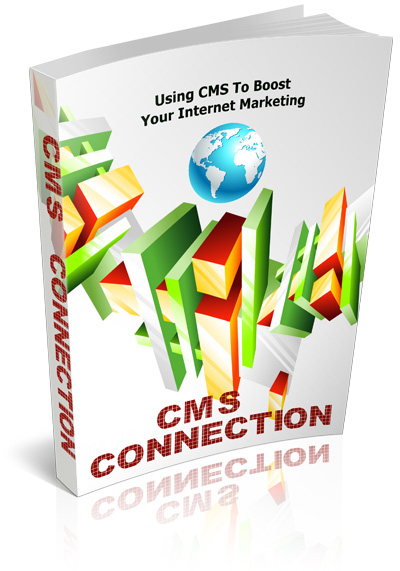CMS Connection For Internet Marketing: E-Book summary and Free download
This briefing document summarizes the key themes and important ideas presented in the provided excerpts from “CMS Connection Ebook” The document focuses on the definition, benefits, setup considerations, and integration of Content Management Systems (CMS) for effective internet marketing.
Main Themes and Important Ideas:
1. What is a CMS? (Foreword, Chapter 1)

- Definition: A CMS (Content Management System) is defined as a “descriptive term for keeping the website up and running efficiently and smoothly.” (Foreword)
- Core Functionality: A CMS facilitates the initial creation of a website and serves as an “administration tool that can make necessary adjustments whenever needed.” (Chapter 1)
- Ease of Use: The primary advantage highlighted is the user-friendly administrative style, allowing individuals without deep technical knowledge to “easily manipulate its contents without having any technical detailed knowledge on how the said contents is stored in the database or retrieved content.” (Chapter 1)
- Key Operations: A CMS enables the website host to “add, remove, and change text, graphics content and any other element that needs immediate and simple formats for change.” (Chapter 1) through password-protected access.
- Database Management: The CMS assists in tracking both text and graphics displays, managing the electronic storage of website information, relieving the web host of complex management tasks, especially for those “not very internet savvy.” (Chapter 1)
2. Benefits of Using a CMS (Chapter 2)

- Ease of Learning and Use: Understanding a CMS program is “fairly easy and does not require a lot of time.” (Chapter 2) Users can perform simple tasks like adding, changing, editing, and deleting content pages.
- Content Integrity: Pre-installed page layouts by web designers ensure that automatically generated content and links “cannot be easily altered by just any content author.” (Chapter 2)
- Accessibility and Up-to-Date Content: Websites can be kept up-to-date from anywhere with internet access. As content is maintained through a web-enabled system, “there is no need for additional software,” saving on licensing and hardware costs. (Chapter 2)
- Design and Content Independence: Designers and content managers can work independently on the same website “without disturbing each other,” as designs can be changed without affecting content and content management functions. (Chapter 2)
3. Setting Up a CMS Site (Chapter 3)

- Thoroughness and Presentation: Setting up a CMS requires careful consideration to avoid “unstyled elements or half content pages on display.” (Chapter 3) Pages should be readable, interesting, and attention-grabbing.
- Platform Choice: Using a WordPress-based CMS “may be a better option” to simplify software sorting. (Chapter 3)
- Design Approach: Starting with coding the design using HTML and CSS before implementing the CMS might be beneficial for easier early-stage browse checks and a better understanding of building platforms.
- Placeholder Content: Utilizing “Lorem Ipsum” can facilitate easier integration of code and ensure awareness of all design functions and their styling status.
- Navigation: Including robust navigation is crucial, especially vertical navigation, to accommodate constant updates and additions. Considering plug-ins is recommended for evolving websites.
4. CMS and SEO (Chapter 4)

- Intertwined Concepts: While a good CMS and SEO strategy can be advantageous, it’s crucial to understand their connection.
- Content as the Foundation: Good website content is the “main target for search engine optimization,” and a CMS can facilitate its monitoring.
- Limitations of Standard CMS for SEO: Most CMS are not inherently designed with SEO marketing elements in mind.
- Key SEO Considerations:Bad Meta Tags: Many CMS do not have unique relevant titles or descriptions, hindering search engine understanding of page content.
- Keyword Poor URLs: This negatively impacts search engine ranking; keyword-rich URLs are a significant advantage.
- Search Engine Visibility: CMS and designers may create pages with elements (text images, script-based navigation, overuse of AJAX) that are “mostly invisible to search engine spiders.”
- Integration is Key: The best approach is to explore and identify the advantages of both CMS and SEO within one platform to optimize the website. Aligning CMS assistance for web design with suitable SEO promotional advantages is recommended.
5. CMS and Social Branding (Chapter 5)

- Importance of Social Branding: Social branding is “an important ingredient that is necessary for the success of the item being promoted anywhere more so in the vast arena of the internet marketing platform.” (Chapter 5)
- CMS as a Tool for Management: A CMS can help manage a social branding campaign by facilitating the handling of “developments, goals, services, product launches, promotional data and any other connective information that the site generates.” (Chapter 5)
- Maintaining Control and Transparency: A CMS ensures the web host “does not lose control of the views and intended desires of the site,” providing “culture transparency and innovation” in an easy and manageable way. (Chapter 5)
- Leveraging Customer Intelligence: By accessing platforms for customer intelligence and analysis, the CMS assists in incorporating learned information and making necessary webpage changes with minimal complications.
- Facilitating Strategy Development: CMS makes the process of “developing and redeveloping strategies for the optimization of the website” easier. (Chapter 5)
6. Integrating Analytics (Chapter 6)

- Value of Analytics Tools: Tools that assist in improving website content and management through analysis are highly valuable.
- Data Flow: Analytics applications collect data from the website via JavaScript and process it to generate reports on site performance based on key metrics.
- One-Way Communication Limitation: Analytics and CMS typically have a “one-way communication level,” requiring further connection to ensure information is managed and applied effectively.
- Benefits of Integration: Integrated analytics allow for “quick and efficiently systematic fashion” in making metrics-driven changes to the website on demand.
- Data-Driven Improvements: Changes are based on “actual user reactions and perceptions,” leading to improved website performance and ROI through optimized visitor experience and conversion rates.
- Content Optimization: Integrated analytics greatly assist in content management through “continual data driven refinements,” as informative content drives website usage.
7. Integrating E-mails (Chapter 7)

- Enhancing Website Content: Utilizing CMS features can further improve website content.
- Email Marketing Management: Integrating emails as a marketing tool provides a platform for better management of email campaigns within the CMS.
- Triggered Emails: The system can “trigger emails that are based on promising value based on the actions derived from the site.” (Chapter 7)
- Personalized and Timely Communication: Emails designed to address prospect requirements and sent out in a timely manner are crucial for encouraging interaction and keeping the website relevant.
- Utilizing Acquired Information: Emails can incorporate information from various platforms to make website adjustments and inform prospects of new developments.
- Automated Email Capabilities: Integrated systems can automatically trigger targeted emails based on website interactions and create emails using published content to inform interested parties. Personalized emails can also encourage further interaction.
Wrapping Up (Chapter 8 – implied):
- Overall Contribution of CMS: CMS tools contribute to keeping websites “informative, useful, presentable and user friendly at all times,” which is vital for staying competitive.
- Efficiency and Up-to-Date Status: CMS helps eliminate time-consuming, complicated procedures and ensures the website remains up-to-date.
Important Note: Readers are reminded of the legal notice stating that the publisher does not guarantee the accuracy of the content due to the internet’s dynamic nature and advises seeking professional advice for legal, business, accounting, or financial matters.
